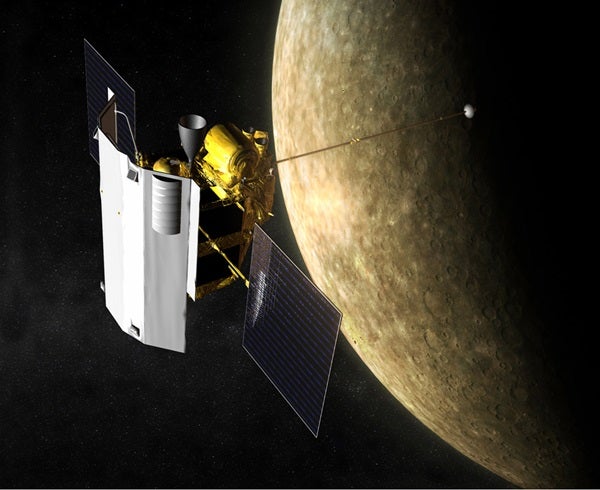NASA’s MErcury Surface, Space ENvironment, GEochemistry, and Ranging spacecraft — better known by its acronym MESSENGER — logged some 4.9 billion miles (7.9 billion kilometers) during its nearly seven-year journey to the solar system’s innermost world. Following two flybys in 2008 and another one in 2009, the probe settled into orbit around Mercury in March 2011.
Although planetary scientists thought the planet would turn out to be similar to the cold dead Moon, it has proven to be far more complex. Besides harboring water ice near its poles, Mercury has an offset magnetic field, an unexpected composition, and irregular pits that may be sites where volcanic gases vent from the interior. Astronomy has covered MESSENGER’s discoveries from the beginning. Here we present two previous feature articles: “Messages from Mercury,” which describes what scientists knew when the spacecraft entered orbit; and “Mercury: Planet of fire and ice,” which details the first exciting results.










